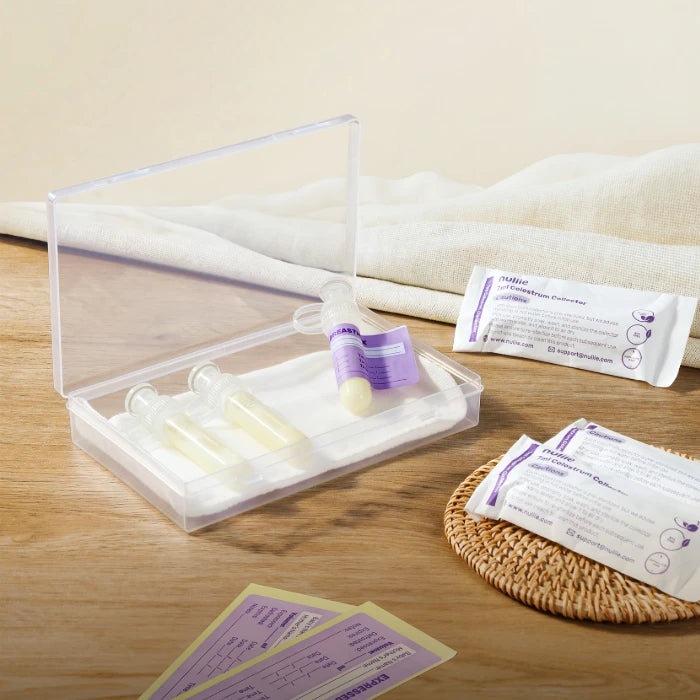Breastfeeding is a deeply bonding experience that blends instinct with learned techniques. In this guide, we'll explore effective postures, common pitfalls, and supportive tools to enhance comfort and nourishment for both mother and child.
The Importance of Comfort: Finding the Right Position
Breastfeeding, a profoundly natural and bonding activity between mother and child, demands more than just maternal instinct—it requires attention to physical posture. The correct positioning can be the linchpin for successful nursing, affecting everything from the ease of latching to the comfort of both the mother and child. Below, we delve deeper into the critical elements of breastfeeding posture and provide strategies to optimize each component for an enhanced nursing experience.
- Understanding Optimal Breastfeeding Posture
Achieving a comfortable posture during breastfeeding isn't just about easing the mother's physical strain; it plays a pivotal role in the efficiency of milk flow and overall breastfeeding effectiveness. Here are the key aspects to focus on:
- Stable Back Support: Engaging in prolonged feeding sessions without proper back support can lead to significant discomfort and potential long-term back issues. Utilizing a chair with sturdy back support or placing a supportive cushion can help maintain an upright, pain-free posture that promotes endurance during feeds.
- Relaxed Shoulders and Arms: Tension in the shoulders and arms can transfer discomfort to the baby, potentially complicating the latching process and making the feeding stressful for both parties. Mothers should focus on keeping their shoulders down and relaxed, with arms supported either by cushions or specially designed nursing pillows, to foster a tranquil feeding environment.
- Correct Baby Alignment: The position of the baby relative to the mother is critical. The baby should be brought up to the breast, rather than the mother leaning over, to prevent hunching. This alignment helps the baby latch correctly and significantly reduces the physical strain on the mother, promoting a more sustainable and comfortable breastfeeding experience.
- The Impact of Discomfort on Breastfeeding Dynamics
Discomfort during breastfeeding isn’t merely a nuisance; it has tangible effects on nursing efficiency. Studies have shown that physical discomfort in mothers can lead to increased fussiness in babies and difficulties in maintaining a proper latch, which can subsequently reduce the effectiveness of feeding sessions. Ensuring a relaxed and pain-free posture is therefore not only beneficial for the mother’s health but crucial for the baby’s nutritional intake and emotional contentment.
- Exploring Various Nursing Positions to Find Your Sweet Spot
Every mother and baby duo is unique, and what works for one pair may not work for another. It’s essential for new mothers to experiment with various breastfeeding positions to find the one that offers the most comfort and effectiveness:
- The Cradle Hold: This traditional position involves the baby lying across the mother’s abdomen, supported by the arm on the same side as the nursing breast. It's widely used because it supports the baby well and can be easily adjusted for comfort.
- Laid-Back Nursing (Biological Nurturing): This position involves the mother reclining and allowing the baby to lie on top, using gravity to aid the natural latch. This can be particularly beneficial for newborns and mothers recovering from childbirth as it encourages easier latch and can be soothing for the baby.
- Side-Lying Position: Ideal for night feeds or for mothers who had a cesarean section, this position allows the mother and baby to lie side by side, making it easier to nurse without putting pressure on the abdomen.
By embracing these practices, mothers can significantly enhance their breastfeeding journey, leading to a more fulfilling and successful nursing experience that benefits both mother and child in the long term.
Common Posture Mistakes and How to Fix Them
Even with the best intentions, many new mothers fall into some common breastfeeding posture traps that can lead to discomfort and even injury over time. The American Academy of Pediatrics (AAP) highlights posture as a key factor in preventing common breastfeeding-related problems, such as neck and back pain, as well as promoting proper infant growth and milk intake. Let's explore some common posture mistakes and the simple fixes that can make a world of difference.
- Leaning Forward During Feeding
Leaning forward toward your baby during feedings might feel instinctive, as it seems like you're helping them get closer. However, this can cause unnecessary strain on your neck, back, and shoulders. Research from the University of California suggests that poor posture while breastfeeding can lead to chronic musculoskeletal pain. To avoid hunching over, bring your baby up to breast level. Nursing pillows or rolled towels under your arms can elevate your baby, allowing you to sit back and relax.
- Arm Support During Extended Feeds
Not supporting your arms properly during longer feeds can lead to arm and shoulder fatigue. Holding your baby without any arm support might be manageable for a few minutes, but during the extended feeding sessions that newborns often require, this can cause sore muscles and even tension headaches. Use cushions or pillows to support your arms, and ensure that you are sitting comfortably with both feet firmly planted or propped on a stool.
- Proper Baby Alignment
Improper alignment of your baby’s body can create discomfort for them and lead to feeding inefficiencies. If your baby’s head is twisted or their body isn’t aligned properly with their head, they may struggle to latch and feed effectively, causing frustration and potentially lowering milk intake. Ensuring that your baby has a straight spine and neck can make it easier to feed, reduce feeding time, and decrease occurrences of gassiness or reflux in infants, as they’re able to swallow milk more efficiently.
Correcting common posture mistakes can enhance comfort and improve feeding effectiveness. Keep these tips in mind to ensure a more comfortable and successful breastfeeding experience.
How to Avoid Strain During Long Breastfeeding Sessions
Long breastfeeding sessions are a common reality for most new mothers, especially in the early days when babies frequently need to be fed. The American Pregnancy Association notes that newborns can feed for 20 to 45 minutes per session, sometimes even more. Without proper posture and preparation, these extended feeding times can lead to significant physical strain on the mother’s body. However, with the right strategies, you can avoid post-feeding soreness and maintain comfort, even during marathon sessions.
- Support Your Back and Neck
Sitting upright on the edge of a chair or bed may seem convenient but is far from ideal for prolonged periods. This position can place excessive stress on your lower back and neck, potentially leading to chronic pain. Instead, opt for a supportive chair and use a cushion behind your lower back. Studies from the National Institutes of Health (NIH) highlight the importance of ergonomic support to prevent long-term musculoskeletal issues.
- Arm and Shoulder Care
Extended periods of holding a baby without support can lead to "nursemaid’s arm," a repetitive strain injury affecting the wrist, elbow, and shoulder. Utilize a breastfeeding pillow or a rolled-up towel to provide necessary support, positioning your arms and baby comfortably. The right pillow elevates your baby to breast level, minimizing the need to adjust your posture frequently.
- Ensure Leg and Foot Comfort
While often overlooked, your feet and legs are crucial for overall comfort during breastfeeding. Ensure your feet are flat on the floor, and use a footstool if seated on a higher surface to keep your legs in a neutral position. Dangling legs can create tension in your hips and lower back, adding to discomfort. Proper support helps distribute your body weight evenly, enabling you to feed comfortably for longer periods.
- Stay Hydrated
Breastfeeding can be dehydrating, making it essential to keep a water bottle close at hand. Proper hydration not only supports milk production but also helps maintain your energy levels and comfort throughout long feeding sessions. Research shows that staying hydrated is key to a smooth breastfeeding experience.
By implementing these targeted strategies, you can significantly reduce the physical challenges associated with long breastfeeding sessions, ensuring both you and your baby enjoy a more comfortable and fulfilling nursing experience.
Incorporating Helpful Tools to Improve Comfort
Breastfeeding, while an enriching bonding experience, can also be physically demanding. Employing a few carefully selected tools can significantly enhance your comfort and the overall effectiveness of the nursing process. These tools, backed by scientific validation, are designed to support new mothers who may experience discomfort during breastfeeding.
- Enhanced Support with Nursing Pillows
Nursing pillows are crucial for reducing the physical demands of breastfeeding. These pillows provide full body support, elevating your legs, cooling your body, and propping up your back in a supportive embrace that helps stimulate blood circulation and relieve back pains. By raising your baby to the right level, nursing pillows minimize the need to lean forward, thus reducing strain on your neck, back, and shoulders, and making it easier to maintain a comfortable position.
- Hygiene and Comfort with Disposable Nursing Pads
Leakage is a common issue in the early weeks of breastfeeding as your body adjusts to your baby's feeding needs. Disposable breast pads, like those from nuliie, offer instant absorption and long-lasting moisture lock-in, keeping you dry and comfortable. Their ultra-thin, featherlight design and soft, breathable fabric ensure skin-friendly comfort, while the strong double adhesive strips keep the nipple pads securely in place, offering discreet and reliable protection.
- Efficient Milk Collection with Passive Breast Milk Collectors
For mothers experiencing milk oversupply or leakage from the unused breast during feeds, passive breast milk catchers are an effective solution. These devices use natural suction to gently collect excess milk, providing a hands-free, discreet way to save milk that would otherwise be lost. Their portable and lightweight design makes them ideal for use both at home and on the go, ensuring you can collect and save every precious drop of milk.
- Colostrum Collection Made Easy
The early days after childbirth are crucial for collecting colostrum, known as the first form of milk rich in antibodies and nutrients. The Nuliie Colostrum Collector kit simplifies this process, allowing for the efficient collection, storage, and feeding of colostrum directly from the same device. This pre-sterilized, ready-to-use collector is designed for ease and efficiency, ensuring that not a drop of the precious colostrum is wasted and providing your newborn with vital early nourishment.
By integrating these tools into your breastfeeding routine, you can alleviate discomfort and improve the overall experience, ensuring that each session is as comfortable and effective as possible for both you and your baby.
Breastfeeding blends physical comfort with scientific insights, enhancing the bond between mother and child. By finding the right posture and using supportive tools, you can transform nursing into a nurturing, comfortable experience. Experimentation and the right aids can make breastfeeding a joyful time of bonding.





Leave a comment
This site is protected by hCaptcha and the hCaptcha Privacy Policy and Terms of Service apply.